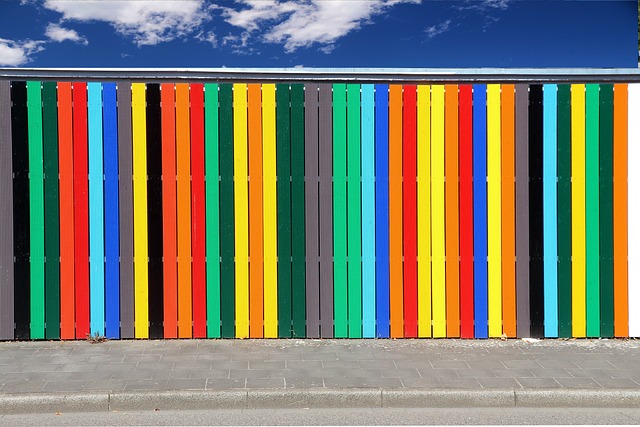In the pursuit of sustainable living, New Bedford, MA, residents are increasingly exploring eco-friendly fencing options. This article delves into the diverse range of green fencing materials available locally, highlighting their environmental and aesthetic benefits. From recycled plastic to organic wood and living fences, we explore natural solutions for your yard. Learn how to choose the best eco-conscious fence, discover local suppliers, and gain installation tips to enhance your space with sustainable charm.
- Eco-Friendly Fencing Options in New Bedford
- Benefits of Sustainable Fencing Materials
- Natural Fencing Solutions for Your Yard
- How to Choose the Best Green Fence
- Local Suppliers and Installation Tips
- Enhancing Your Space with Eco-Conscious Fencing
Eco-Friendly Fencing Options in New Bedford
In New Bedford, MA, there’s a growing trend towards eco-friendly fencing options that not only enhance outdoor spaces but also contribute to a greener environment. Residents are increasingly opting for sustainable materials that minimize ecological impact while offering aesthetic appeal and durability. Among these, recycled plastic and composite fences top the list due to their longevity and resistance to rot, making them a popular choice for both residential and commercial properties.
Local suppliers offer a range of eco-friendly options tailored to suit various preferences and landscapes. From stylish wooden pallets upcycled into unique fences to modern synthetic materials imitating traditional wood, New Bedford homeowners have several sustainable choices. These fencing materials not only reduce waste but also require less maintenance compared to conventional options, making them an attractive investment for those seeking both environmental responsibility and low-effort upkeep.
Benefits of Sustainable Fencing Materials
In an era where environmental consciousness is paramount, opting for sustainable fencing materials offers a multitude of benefits. Not only do eco-friendly options reduce the carbon footprint associated with traditional fencing, but they also contribute to the local ecosystem’s health. These materials are often made from recycled or renewable resources, decreasing the demand for new material extraction and processing, which can be energy-intensive and polluting.
Moreover, sustainable fencing is designed to withstand harsh weather conditions, requiring less maintenance over time. This longevity not only saves residents in New Bedford, MA, money but also reduces the environmental impact of frequent replacements. Additionally, these materials are known for their aesthetic appeal, providing an attractive, natural look that complements outdoor spaces while promoting a harmonious relationship between human habitats and the surrounding environment.
Natural Fencing Solutions for Your Yard
When it comes to enhancing your yard or garden, opting for natural fencing materials offers a beautiful and eco-conscious solution. In New Bedford, MA, residents are increasingly embracing sustainable options, and natural fencing is at the forefront of this movement. Materials like bamboo, wood from sustainably managed forests, and even living fences with hedges provide both aesthetic appeal and environmental benefits.
These natural alternatives not only contribute to a healthier ecosystem but also add character to your outdoor space. Bamboo, for instance, is renowned for its strength and quick regrowth, making it an excellent choice that requires less maintenance compared to traditional fencing. Living fences create a dynamic border, allowing plants to grow and change over time, providing both privacy and a diverse habitat for local wildlife.
How to Choose the Best Green Fence
When selecting an eco-friendly fence for your New Bedford, MA property, consider materials that are durable, low-maintenance, and have minimal environmental impact. Bamboo, recycled plastic, and reclaimed wood are excellent choices known for their strength and longevity. These materials not only reduce waste but also require less treatment with chemicals compared to traditional fencing.
Additionally, look for products certified by reputable eco-labels to ensure they meet specific sustainability standards. Local availability and cost should also factor into your decision, as supporting regional suppliers further promotes environmental stewardship. Remember, the best green fence is one that balances aesthetics, functionality, and ecological responsibility.
Local Suppliers and Installation Tips
New Bedford, MA, residents now have access to an array of eco-friendly fencing materials, thanks to local suppliers who prioritize sustainability. These suppliers offer options such as recycled plastic, bamboo, and treated wood that not only reduce environmental impact but also enhance the aesthetics of outdoor spaces. When choosing a fence, consider factors like climate resistance, maintenance requirements, and local regulations.
For installation, it’s advisable to consult with professionals who specialize in eco-friendly fencing. They can provide valuable insights on the best practices for each material, ensuring longevity and performance. Additionally, these experts can assist with designing a fence that aligns with your specific needs and preferences while minimizing ecological footprints.
Enhancing Your Space with Eco-Conscious Fencing
Eco-friendly fencing materials are transforming outdoor spaces in New Bedford, MA, offering both aesthetic appeal and environmental benefits. These innovative options provide an alternative to traditional fences, allowing residents to create beautiful, natural boundaries while minimizing their ecological footprint. By choosing sustainable materials like recycled plastic, bamboo, or organic wood, homeowners can enhance the curb appeal of their properties and contribute to a greener community.
Such fencing not only reduces waste but also supports local ecosystems by utilizing renewable resources. Moreover, these eco-conscious choices often come with long-lasting durability, ensuring that New Bedford’s landscapes remain picturesque for years to come. This trend in sustainable landscaping is a step towards a more harmonious coexistence between human habitats and the natural world.
